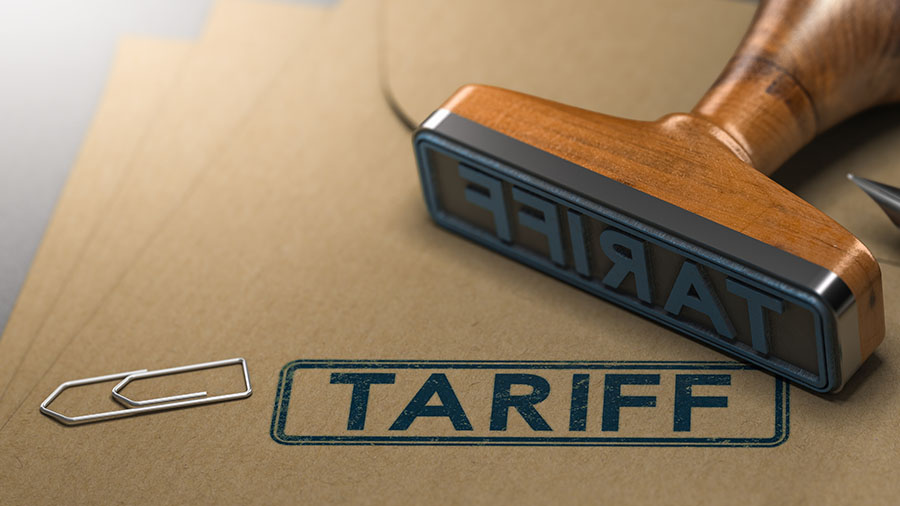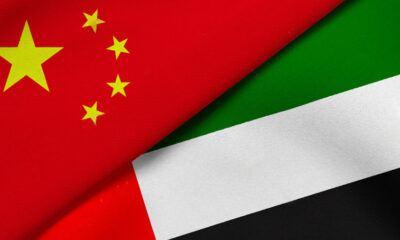China
Louis Vuitton’s Intrepid Effort to Court China’s Tourists
Jason Lee/Reuters A guide looks in from the entrance of a hall for a Louis Vuitton Voyages exhibition at the National Museum of China in Beijing May 31, 2011. Louis Vuitton Louis, Georges and Gaston-Louis Vuitton (lying down on a trunk-bed) posing with factory workers in front of a horse-drawn delivery van circa 1888. More In luxury China’s Rich: Status Is Out, Travel Is In China Leads Luxury Spending Ray-Bans and Oakleys for Chinese Faces China Watch: The Rich and Tasteless, Autos Losing Speed? To Lure Young, Burberry Goes High-Tech Louis Vuitton is making a pitch to consumers in a spot no Western brand has ventured before: the National Museum of China. The French luxury giant, celebrating its 20th year in China, is unveiling special summer exhibit titled “Voyages,” which features the brand’s historical luggage and handbags, in one of the country’s most renowned museums. Having just opened its doors after an epic-long three-year renovation, the museum is one of the most highly-sought spots for the country’s tourists. That makes it a perfect place for Louis Vuitton, which is playing off the current travel craze hitting China. China’s consumers are set to catapult the country’s tourism market past Japan’s by 2020, according to Boston Consulting Group. Last year, China’s outbound tourism market alone was worth 1.5 trillion yuan of revenues, filling the pockets of airline and hotel industries. The upscale brand, owned by luxury house LVMH Moet Hennessey Louis Vuitton, is eager to tap into the travel boom. China, where the taste for luxury goods has driven sales for countless high-end labels, is one of Louis Vuitton’s key growth markets. Travelers, who likely have higher disposable incomes than the average stationary low-income worker, are the brand’s target audience. LV’s museum partnership also fits into China’s recent art rage. According to a report commissioned by the European Fine Art Foundation, China is now the world’s second-largest market for art and antiques. The global art market was estimated at around $60 billion in 2010, of which China accounted for 23%. Other luxury brands are trying out the artistic pitch in China too. Christian Dior launched a multimedia photo exhibit in Shanghai in mid-May, showing off its Lady Dior line of handbags. Earlier this year, U.S. designer Diane von Furstenberg rolled out her “Journey of a Dress” exhibit in Beijing’s 798 art district. Many question whether luxury brands have the credibility to position themselves as art. Louis Vuitton took a little heat , when it opened an art gallery in its Champs Elysees flagship store, showing off an exhibit of nude black and white women spelling out and “L” and a “V” with their bodies. The French company also hit a rocky patch in China earlier in May, when Shanghai’s city government required the company to demolish one of its advertisements—a 65-foot-tall suitcase—that violated the city’s outdoor ad regulations. Louis Vuitton hopes this new suitcase endeavor will result in a little less baggage. – Laurie Burkitt. Follow her on Twitter @lburkitt

- Jason Lee/Reuters
- A guide looks in from the entrance of a hall for a Louis Vuitton Voyages exhibition at the National Museum of China in Beijing May 31, 2011.

- Louis Vuitton
- Louis, Georges and Gaston-Louis Vuitton (lying down on a trunk-bed) posing with factory workers in front of a horse-drawn delivery van circa 1888.
Louis Vuitton is making a pitch to consumers in a spot no Western brand has ventured before: the National Museum of China.
The French luxury giant, celebrating its 20th year in China, is unveiling special summer exhibit titled “Voyages,” which features the brand’s historical luggage and handbags, in one of the country’s most renowned museums. Having just opened its doors after an epic-long three-year renovation, the museum is one of the most highly-sought spots for the country’s tourists.
That makes it a perfect place for Louis Vuitton, which is playing off the current travel craze hitting China.
China’s consumers are set to catapult the country’s tourism market past Japan’s by 2020, according to Boston Consulting Group. Last year, China’s outbound tourism market alone was worth 1.5 trillion yuan of revenues, filling the pockets of airline and hotel industries.
The upscale brand, owned by luxury house LVMH Moet Hennessey Louis Vuitton, is eager to tap into the travel boom. China, where the taste for luxury goods has driven sales for countless high-end labels, is one of Louis Vuitton’s key growth markets. Travelers, who likely have higher disposable incomes than the average stationary low-income worker, are the brand’s target audience.
LV’s museum partnership also fits into China’s recent art rage. According to a report commissioned by the European Fine Art Foundation, China is now the world’s second-largest market for art and antiques. The global art market was estimated at around $60 billion in 2010, of which China accounted for 23%.
Other luxury brands are trying out the artistic pitch in China too. Christian Dior launched a multimedia photo exhibit in Shanghai in mid-May, showing off its Lady Dior line of handbags. Earlier this year, U.S. designer Diane von Furstenberg rolled out her “Journey of a Dress” exhibit in Beijing’s 798 art district.
Many question whether luxury brands have the credibility to position themselves as art. Louis Vuitton took a little heat, when it opened an art gallery in its Champs Elysees flagship store, showing off an exhibit of nude black and white women spelling out and “L” and a “V” with their bodies.
The French company also hit a rocky patch in China earlier in May, when Shanghai’s city government required the company to demolish one of its advertisements—a 65-foot-tall suitcase—that violated the city’s outdoor ad regulations.
Louis Vuitton hopes this new suitcase endeavor will result in a little less baggage.
– Laurie Burkitt. Follow her on Twitter @lburkitt
The restructuring of the economy and resulting efficiency gains have contributed to a more than tenfold increase in GDP since 1978.
In 2009, China announced that by 2020 it would reduce carbon intensity 40% from 2005 levels.
The People’s Republic of China is the world’s second largest economy after the United States by both nominal GDP ($5 trillion in 2009) and by purchasing power parity ($8.77 trillion in 2009).
Available energy is insufficient to run at fully installed industrial capacity, and the transport system is inadequate to move sufficient quantities of such critical items as coal.
Technology, labor productivity, and incomes have advanced much more rapidly in industry than in agriculture.
The technological level and quality standards of its industry as a whole are still fairly low, notwithstanding a marked change since 2000, spurred in part by foreign investment.
The market-oriented reforms China has implemented over the past two decades have unleashed individual initiative and entrepreneurship, whilst retaining state domination of the economy.
The ministry made the announcements during a press conference held in Xiamen on the upcoming United Nations Conference on Trade and Development (UNCTAD) World Investment Forum and the 14th China International Fair for Investment and Trade.
According to the ministry, China’s ODI grew by 1.1 percent from a year earlier to $56.53 billion, which includes investment of $47.8 billion in non-financial sectors worldwide, up 14.2 percent year-on-year.
China is expected to have 200 million cars on the road by 2020, increasing pressure on energy security and the environment, government officials said yesterday.
Although China is still a developing country with a relatively low per capita income, it has experienced tremendous economic growth since the late 1970s.
Despite initial gains in farmers’ incomes in the early 1980s, taxes and fees have increasingly made farming an unprofitable occupation, and because the state owns all land farmers have at times been easily evicted when croplands are sought by developers.
China is the world’s largest producer of rice and wheat and a major producer of sweet potatoes, sorghum, millet, barley, peanuts, corn, soybeans, and potatoes.
Due to improved technology, the fishing industry has grown considerably since the late 1970s.
Coal is the most abundant mineral (China ranks first in coal production); high-quality, easily mined coal is found throughout the country, but especially in the north and northeast.
There are large deposits of uranium in the northwest, especially in Xinjiang; there are also mines in Jiangxi and Guangdong provs.
In addition, implementation of some reforms was stalled by fears of social dislocation and by political opposition, but by 2007 economic changes had become so great that the Communist party added legal protection for private property rights (while preserving state ownership of all land) and passed a labor law designed to improve the protection of workers’ rights (the law was passed amid a series of police raids that freed workers engaged in forced labor).
There are railroads to North Korea, Russia, Mongolia, and Vietnam, and road connections to Pakistan, India, Nepal, and Myanmar.
Here is the original post:
Louis Vuitton’s Intrepid Effort to Court China’s Tourists
China
China’s New Tariff Law: Streamlining and Standardizing Current Tariff Regulations

China’s new Tariff Law consolidates import and export duties, clarifies rules for imposing counter-tariffs, and sets a December 1, 2024 effective date. It codifies existing practices on cross-border e-commerce and rules on the origin of goods into law, impacting trade relations.
China’s new Tariff Law consolidates rules on import and export duties that were previously implemented via several legal documents and makes important clarifications and additions to prior regulations. Among other changes, it stipulates provisions for the Chinese government to impose counter-tariffs on imported goods, codifying these powers into law for the first time. We outline all the notable updates to the China Tariff Law and discuss the implications for the country’ current trade relations.
On April 26, 2024, the National People’s Congress (NPC), China’s legislature, adopted the Tariff Law of the People’s Republic of China (the “Tariff Law”) after several rounds of revisions.
The new Tariff Law will replace the Import and Export Tariff Regulations of the People’s Republic of China, which fall under the purview of the State Council, and adopts many of its provisions.
Previously, Chinese law had not stipulated legislative powers to implement countervailing tariffs, although China was nonetheless able to impose counter-tariffs on trade partners through other means.
China’s new Tariff Law comes into effect on December 1, 2024.
China’s Tariff Law elevates several existing provisions and practices to the level of law. For instance, Article 3 of the Tariff Law clarifies the obligations of cross-border e-commerce platforms for tariff withholding and implementing consolidated taxation.
The Tariff Law also solidifies the rules and regulations on the origin of goods, stipulating that the application of tariff rates shall comply with the corresponding rules of origin. Although this has been previously implemented in practice, it is the first time this has been codified into law.
This article is republished from China Briefing. Read the rest of the original article.
China Briefing is written and produced by Dezan Shira & Associates. The practice assists foreign investors into China and has done since 1992 through offices in Beijing, Tianjin, Dalian, Qingdao, Shanghai, Hangzhou, Ningbo, Suzhou, Guangzhou, Dongguan, Zhongshan, Shenzhen, and Hong Kong. Please contact the firm for assistance in China at china@dezshira.com.
China
Outlook on Bilateral Trade and Investment between China and United Arab Emirates (UAE)

The UAE and China have a strong partnership, with the UAE being China’s top trade partner in the Arab world. Both countries collaborate on various sectors like logistics and technology, showcasing mutual commitment to economic growth and global cooperation. High-level trade and investments continue to drive their relationship.
The UAE and China share a robust partnership integral to both countries’ development and foreign policy goals, exemplifying a model of collaboration. Bilateral trade thrives, with the UAE as China’s top trade partner in the Arab world, while investments span key sectors like logistics and technology. This comprehensive strategic partnership continues to evolve, showcasing mutual commitment to economic growth and global cooperation.
The United Arab Emirates (UAE) holds a significant position in China’s trade and commercial connections within the Middle East, particularly in the Arab Gulf region. This partnership is integral to China’s broader strategic initiatives, including the Belt and Road Initiative (BRI), which the UAE actively supports.
Additionally, the UAE plays a crucial role in advancing China’s foreign policy objectives, such as enhancing South-South cooperation, particularly in technical collaboration among developing nations and the Global South in areas like resources and technology.
In this article, we delve into the dynamics of bilateral trade and investment between the UAE and China, exploring the key factors driving their economic relationship and the opportunities it presents for mutual growth and prosperity.
China and the UAE first established their diplomatic relations in 1984. While China has an embassy in Abu Dhabi and a consulate general in Dubai, the UAE has a consulate general in Hong Kong and an embassy in Beijing. China and the UAE have long been close partners, collaborating extensively on economic, political, and cultural fronts.
In 2018, Chinese President Xi Jinping went on a state visit to the UAE, making history as the first Chinese head of state to visit the country in the previous 29 years. The visit was instrumental in lifting bilateral relations to a ‘comprehensive strategic partnership’.
High-level trade has always been the foundation of bilateral ties. Bilateral commerce between China and the UAE reached new heights in 2021, surpassing US$75.6 billion. Additionally, as of 2022, about 6,000 Chinese businesses operate in the UAE, with a sizable Chinese population working primarily in the infrastructure and energy sectors. The UAE is also China’s second-largest economic partner in the Middle East, after Saudi Arabia.
This article is republished from China Briefing. Read the rest of the original article.
China Briefing is written and produced by Dezan Shira & Associates. The practice assists foreign investors into China and has done since 1992 through offices in Beijing, Tianjin, Dalian, Qingdao, Shanghai, Hangzhou, Ningbo, Suzhou, Guangzhou, Dongguan, Zhongshan, Shenzhen, and Hong Kong. Please contact the firm for assistance in China at china@dezshira.com.
China
2024 Tax Incentives for Manufacturing Companies in China

China offers various tax incentives to boost the manufacturing industry. The Ministry of Finance and State Tax Administration provide guidelines on eligibility and policies. VAT exemptions and refunds are available for companies producing specific goods or services, with a monthly refund option for deferred taxes.
China implements a wide range of preferential tax policies to encourage the development of the country’s manufacturing industry. We summarize some of the main manufacturing tax incentives in China and explain the basic eligibility requirements that companies must meet to enjoy them.
China’s Ministry of Finance (MOF) and State Tax Administration (STA) have released guidelines on the main preferential tax and fee policies available to the manufacturing industry in China. The guidelines consolidate the main preferential policies currently in force and explain the main eligibility requirements to enjoy them.
To further assist companies in identifying the preferential policies available to them, we have outlined some of the main policies currently available in the manufacturing industry, including links to further resources.
For instance, VAT is exempted for:
Companies providing the following products and services can enjoy immediate VAT refunds:
Companies in the manufacturing industry that meet the conditions for deferring tax refunds can enjoy a VAT credit refund policy. The policy allows companies to receive the accumulated deferred tax amount every month and the remaining deferred tax amount in a lump sum.
The policy is not exclusive to the manufacturing industry and is also available to companies in scientific research and technical services, utilities production and supply, software and IT services, and many more.
This article is republished from China Briefing. Read the rest of the original article.
China Briefing is written and produced by Dezan Shira & Associates. The practice assists foreign investors into China and has done since 1992 through offices in Beijing, Tianjin, Dalian, Qingdao, Shanghai, Hangzhou, Ningbo, Suzhou, Guangzhou, Dongguan, Zhongshan, Shenzhen, and Hong Kong. Please contact the firm for assistance in China at china@dezshira.com.










